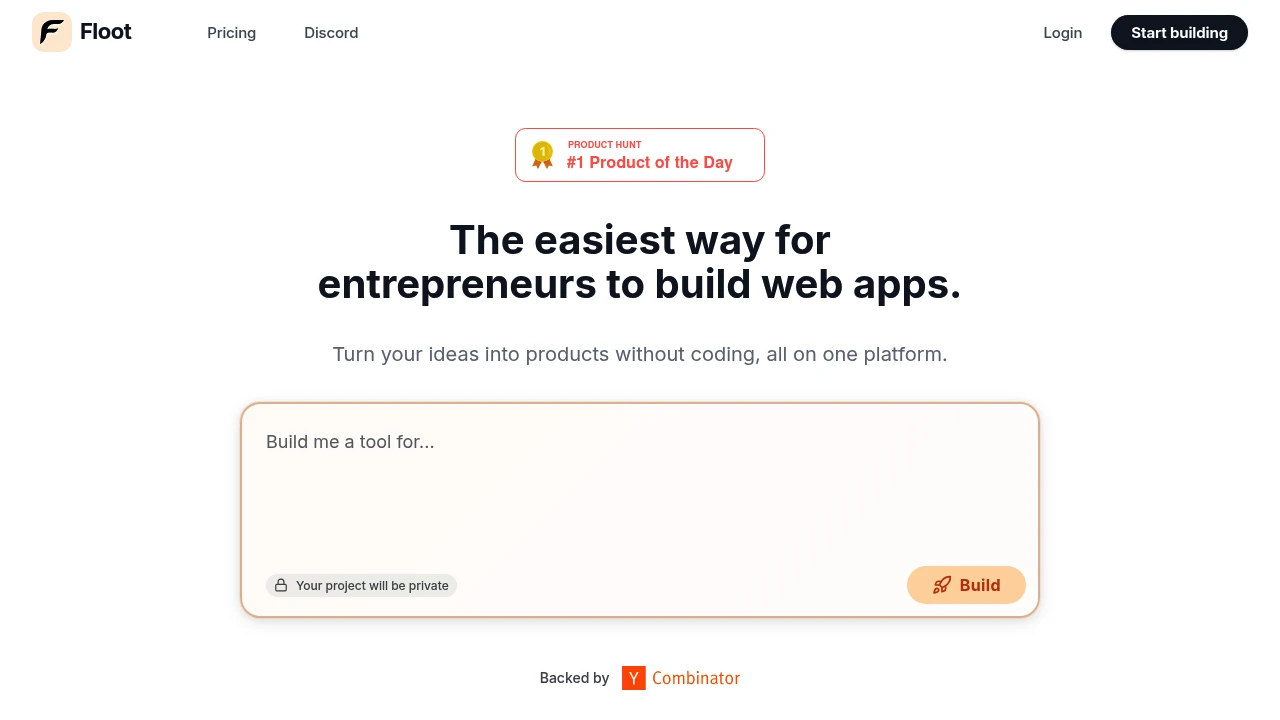Floot
Floot transforms short briefs into functional apps, then helps deploy and iterate.

Floot Features & Overview
Floot is an AI app builder and hosted platform for entrepreneurs. You describe the product in chat or draw changes on the canvas, and the system generates code, wires data, and sets up hosting. The platform uses LLM code generation, agent-style planning, and autonomous error fixing to keep progress moving. You edit visually or in structured panels, test inside the workspace, and publish to a live domain with one click.
Core Features
- Chat to build: You describe screens and behaviors in everyday language, and Floot generates pages, routes, styles, and server logic. The workspace shows proposed edits and applies them after your confirmation to keep control tight.
- Draw-your-change editing: You circle elements, drag arrows, and mark adjustments directly on the preview. The engine translates those marks into layout and code updates, which removes guesswork from small design tweaks.
- All-in-one tech stack: The platform includes backend, database, authentication, hosting, monitoring, and payments. You avoid external setup and move from idea to a functioning app inside one unified environment.
- Autonomous debugging: Floot detects runtime errors and failed builds, analyzes root causes, and proposes minimal patches. You approve the fix and continue building without chasing logs across tools.
- Visual and structured editing: The editor lets you change spacing, typography, and component props while writing real code under the hood. Generated updates preserve consistency across pages and prevent style drift.
- Database and data flows: You define tables and relationships, then bind queries and mutations to forms and components. Built-in helpers handle pagination, optimistic updates, and error states for responsive CRUD.
- User management and auth: The system provisions sign up, login, sessions, and protected routes. You add role checks and reset flows through guided panels, which avoids hand-rolled security code.
- Payments built in: You enable checkout and subscriptions with ready handlers and webhook examples. The platform manages product definitions and events so you start charging customers earlier in the build.
- Monitoring and logs: Live dashboards surface errors, request timings, and status codes as you test. You track regressions quickly and confirm fixes before inviting real users.
- Hosting that scales: Production-grade hosting ships with autoscaling, global delivery, backups, SSL, and custom domains. Deployments run from the same workspace, which shortens feedback loops.
- Ownership and export: You own code, data, and IP. Export remains available, and projects avoid lock-in so long-term control stays with your business.
- Human support on tap: Live chat and scheduled calls connect you with the team. You get practical guidance when you hit product or implementation questions.
Supported Platforms / Integrations
- Web workspace and hosted preview
- Built-in backend, database, auth, and monitoring
- Custom domains with managed SSL
- Payments support
- Export options for code and data
Use Cases & Applications
- Founders shipping MVPs and betas without hiring a dev team
- Agencies delivering marketing sites and full apps on deadlines
- Operators building internal tools for data entry and reporting
- Creators launching memberships, courses, and community apps
Pricing
- Free: $0 per month, credits included for early building
- Pro: $25 per month, priority support, custom domain, badge removal
- Scale: custom pricing, 1-on-1 consultations and dedicated support
Why You’d Love It
- Ships from idea to live app on a single platform
- Fixes errors automatically so momentum continues
- Combines visual edits with real code and export control
Pros & Cons
Pros
- End-to-end stack with hosting, data, auth, and payments
- Chat and sketch inputs that translate into working code
- Automatic error fixing with clear, reviewable changes
Cons
- Heavy usage may require credit top ups or a paid plan
- Best results arrive in common web app patterns
Conclusion Floot turns business ideas into running software without traditional setup. You describe features, review precise edits, connect data and payments, and deploy from the same workspace. Teams that need speed and ownership get a practical path to production.